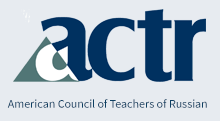Russian Language Journal
Keywords
language, morphology, vocabulary, Russian
Abstract
Included in the tasks facing a language learner is the acquisition of a lexicon and a grammar. However, when the target language has inflectional morphology, these two parts of the language-learning task intersect in the paradigms of grammatical word forms because each open-class lexeme has a number of forms that allow it to express various combinations of grammatical categories. Among major world languages, Russian is relatively highly inflected, meaning that the challenges of acquiring vocabulary are compounded by the need to master the inflectional morphology. Even a modest basic vocabulary of a few thousand inflected lexemes has over a hundred thousand associated word forms. Recent research (Janda and Tyers 2018, described in more detail below) suggests that there could be an advantage to learning only a handful of high-frequency forms for each lexeme. Section 2 reviews distributional facts about paradigms, their theoretical implications, and the results of a computational experiment that simulates the learning of Russian paradigms either in their entirety or based only on the most frequent word forms. Section 3 presents a free public net-based resource, the Strategic Mastery of Russian Tool (SMARTool), which takes up the challenge of providing strategic input for second-language (L2) learning of Russian vocabulary. The design functions and some pedagogical applications of the SMARTool are detailed. Conclusions are offered in Section 4.
Recommended Citation
Janda, Laura A.
(2019)
"Businessmen and Ballerinas Take Different Forms: A Strategic Resource for Acquiring Russian Vocabulary and Morphology,"
Russian Language Journal: Vol. 69:
Iss.
1, Article 9.
Available at:
https://scholarsarchive.byu.edu/rlj/vol69/iss1/9

